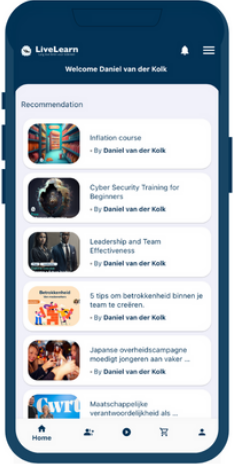
Artikel
17
januari
Mastering the Art of Storytelling for Stakeholder Engagement
Harnessing the Power of Storytelling in Business
Every business, at its heart, tells a story. Stories have the power to shape perceptions, influence decisions, and forge connections. For developers, mastering the art of storytelling can provide a substantial edge in the business landscape, transforming data, codes, and algorithms into compelling narratives that captivate stakeholders and drive engagement.
Why Storytelling Matters in Business
Storytelling is a fundamental human tradition, transcending cultures, eras, and industries. In the world of business, it serves as a robust communication tool, bridging the gap between intricate concepts and broad audience comprehension. By transforming dry facts into engrossing narratives, storytelling infuses meaning into data, inspires emotions, and stimulates action.
A Harvard Business Review article reiterates how stories constitute a potent tool in a leader’s toolkit. They can be particularly impactful when a company’s technical details need to be translated into a digestible, persuasive language that appeals to a broad range of stakeholders.
The Link Between Storytelling and Developer Influence
Historically, developers have been viewed as technical wizards operating behind the scenes. However, in today’s interconnected digital age, their role extends far beyond coding. Developers are increasingly at the forefront of business strategy, innovation, and stakeholder engagement.
But how does storytelling fit into the equation? As a developer, adept storytelling abilities allow you to articulate your ideas, the intricacies of your product, and its potential impact in a relatable and convincing manner. It’s not just about coding; it’s about conveying the story that code tells in a way that resonates with stakeholders.
Storytelling as a Tool for Compelling Business Cases
A business case is, in essence, a story. It delineates the journey from a problem to a solution, outlining the expected benefits, potential challenges, and strategic recommendations along the way. This narrative is not just confined to paper but extends into the realm of business presentations, where it brings to life the very essence of a proposal, helping stakeholders visualize and comprehend your idea.
Just as a captivating plot is vital to an engrossing novel, compelling storytelling is a critical ingredient for impactful business cases. By infusing your narrative with emotional resonance, clear contexts, and persuasive insights, you can illuminate the complex contours of your business case, making it both comprehensible and compelling.
Developers, traditionally nestled in the world of codes and algorithms, can harness storytelling to breathe life into their proposals. It can transform the perception of your work from being a technical exercise to a strategic initiative that contributes to the larger business narrative.
In business presentations, storytelling can be the secret sauce that captures attention and drives home your message. It’s the difference between a presentation that merely informs and one that truly engages and persuades.
To further ease this process, consider utilizing business case templates. These structured formats provide a clear roadmap to guide your narrative, ensuring you cover all essential aspects while maintaining the flow of your story. Remember, however, that a template is just a scaffold; your storytelling skills are what will imbue it with color, life, and impact.
A Forbes article explores the power of storytelling in leadership, showcasing how narratives can spur action, influence decisions, and lead to desired outcomes. In essence, effective storytelling can turn your business case from a mere proposal into a powerful catalyst for change.
Developing a Product Narrative: A Storyteller’s Framework
The process of crafting a compelling product narrative involves more than merely listing features and specifications. It entails painting a vivid picture of how your product interacts with users’ lives, solves their problems, and adds value.
First, it’s crucial to understand your audience. Research their needs, preferences, and pain points. Next, position your product as the solution, depicting how it addresses these aspects. Finally, highlight the unique selling points of your product, portraying how it stands out from the competition.
Beyond the Basics: Advanced Storytelling Techniques for Developers
To augment your storytelling prowess, several advanced techniques can be employed. Metaphors, for instance, can be a powerful tool. They help bridge the gap between complex, technical information and the audience’s understanding. Furthermore, integrating data into your narrative can lend it credence and depth. Strategic emotional appeals can also elevate your story, as emotions often drive decision-making.
An informative piece by The Content Advisory further elaborates on the importance of strategic storytelling in shaping business futures.
Case Studies: Storytelling Success in the Tech Industry
Real-world examples provide compelling evidence of the power of storytelling in action. One such success story is that of SpaceX. Despite the highly technical nature of the aerospace industry, Elon Musk, the company’s CEO, has consistently used storytelling to explain complex concepts, inspiring public interest and stakeholder buy-in.
By presenting the company’s mission as not just launching rockets but revolutionizing space travel and making life multi-planetary, Musk has crafted a narrative that captures imaginations. The power of this story is a testament to the influence developers can wield when they master storytelling.
Practicing Your Storytelling Skills: Tips for Continuous Improvement
Like any skill, storytelling requires practice. Regularly writing and presenting your narratives is essential for honing this craft. But equally important is seeking feedback.
Encourage your audience, whether they’re your colleagues, friends, or family, to provide their thoughts. Use this feedback as a learning opportunity, refining your story based on their reactions and insights.
Remember, storytelling is an art. And art is often subjective. Don’t be disheartened by initial difficulties or critique. Learn, adapt, and continue practicing.
Conclusion: Writing Your Success Story
In today’s rapidly evolving business landscape, the role of developers extends beyond coding. It’s about painting a vivid, persuasive picture of your ideas, your product, and its potential impact.
Mastering storytelling equips you with the power to captivate your audience, making stakeholder engagement not just possible but probable. It allows you to craft compelling business cases and product narratives that resonate influence, and inspire.
Storytelling isn’t merely a skill; it’s a tool—one that you, as a developer, can wield to write your success story in the annals of your organization.
In the end, remember that every code you write tells a story. Your task is to ensure it’s a story worth telling, a story that not only communicates but also connects.
Armed with the art of storytelling, you’re no longer just a developer. You are a narrator, a guide, a changemaker—wielding the power to drive engagement, inspire change, and make your mark in the business world. Your journey starts now. Will you seize the opportunity?
The path to becoming a master storyteller may be challenging, but as the saying goes, “The most potent story you’ll ever manage is your own.”
What's your reaction ?
Follow us on Social Media
Some Categories
Recent posts

November 22, 2024
Loonkosten 2025: hier kun je als werkgever op rekenen

November 20, 2024
Books Article

November 19, 2024
Hoe Aristoteles nu zorgt voor impactvolle communicatie

November 16, 2024
Loonkosten 2025: hier kun je als werkgever op rekenen

November 09, 2024
Dit betekent het regeerakkoord voor jou als ondernemer

 Inloggen
Inloggen
 Registreren
Registreren






Comments (0)
No reviews found
Add Comment